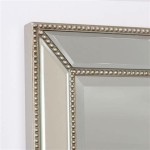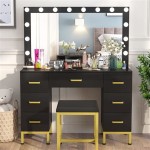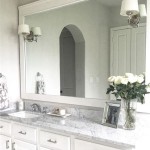Large Multi-Panel Wall Mirror: A Comprehensive Guide
Large multi-panel wall mirrors are increasingly popular in interior design, offering a unique blend of aesthetic appeal and functional benefits. These mirrors, typically composed of several individual panels arranged together, can transform a space by amplifying light, creating an illusion of expanded size, and serving as a striking decorative element. This article will explore the various aspects of large multi-panel wall mirrors, including their design considerations, installation nuances, and applications in different interior settings.
The term "large" in the context of these mirrors is relative, generally referring to pieces that occupy a significant portion of a wall. This size can range from covering a single wall in a small room to acting as a statement piece in a large open-plan area. The "multi-panel" aspect is crucial, distinguishing these mirrors from single, large-scale mirrors. The division into panels offers several advantages, including ease of handling during installation, enhanced design flexibility, and reduced risk of breakage due to stress or warping.
Design Considerations for Multi-Panel Mirrors
When selecting a large multi-panel wall mirror, several design elements must be carefully considered. The panel configuration is paramount, influencing the overall aesthetic and the perceived effect on the space. Common configurations include grid-like arrangements, staggered patterns, and asymmetrical layouts. The choice depends largely on the desired visual impact and the architectural style of the room. A grid pattern offers a clean, modern look, while staggered panels can introduce visual interest and dynamism. Asymmetrical designs, though more challenging to execute effectively, can create a unique and artistic focal point.
Frame design is another key aspect. Frames can range from thin, minimalist metal edges to ornate, decorative moldings. The frame material significantly impacts the mirror's overall style and its compatibility with the surrounding décor. Metal frames, particularly those in brushed silver or black, often complement contemporary or industrial-inspired interiors. Wood frames, especially those with intricate carvings or distressed finishes, are well-suited for traditional or rustic spaces. Frameless multi-panel mirrors are also a popular choice, offering a sleek and seamless look that blends easily into various design schemes. These frameless options often utilize beveled edges or polished sides to enhance their visual appeal.
The reflective quality of the mirror itself is crucial. High-quality mirror glass provides a clear, undistorted reflection and maximizes light amplification. The silvering process used in manufacturing the mirror determines its reflectivity and durability. Mirrors intended for high-humidity environments, such as bathrooms, require a specialized silvering process to prevent corrosion and clouding. Tinted or antiqued mirror glass can also be used to create a more vintage or dramatic effect, although this will affect the amount of light reflected and the clarity of the reflection.
Beyond the aesthetic qualities, the size and shape of each individual panel matter. Smaller panels typically contribute to a more fragmented and visually busy appearance, while larger panels create a more expansive and unified reflection. The shape of the panels can also vary, from rectangles and squares to more unconventional forms like hexagons or organic shapes. Choosing the appropriate panel shape and size is critical for achieving the desired aesthetic and functional outcome.
Installation Techniques and Best Practices
Installing a large multi-panel wall mirror requires careful planning and execution to ensure both safety and aesthetic integrity. The weight of the mirror must be a primary consideration. Large mirrors can be exceptionally heavy, requiring robust mounting hardware and a structurally sound wall. Professional installation is often recommended, particularly for very large or complex multi-panel arrangements. However, with proper preparation and attention to detail, it is possible to install these mirrors as a DIY project.
The first step is to accurately measure the wall space and plan the layout of the panels. A detailed template or schematic diagram is essential to ensure proper alignment and spacing. The template should indicate the exact location of each panel and the corresponding mounting hardware. It is crucial to use a level and plumb bob to ensure that the panels are perfectly aligned horizontally and vertically. Even slight misalignments can become visually apparent and detract from the overall aesthetic.
The choice of mounting hardware depends on the weight of the mirror and the type of wall. For drywall, it is essential to locate and utilize wall studs whenever possible. Screw directly into the studs provides the most secure mounting solution. If studs are not available, heavy-duty drywall anchors should be used. These anchors are designed to distribute the weight of the mirror across a larger area of the drywall, preventing it from pulling away. For concrete or brick walls, specialized masonry anchors are required.
When attaching the panels to the wall, it is important to use appropriate adhesives in addition to the mechanical fasteners. Mirror mastic, a specialized adhesive designed for bonding mirrors to various surfaces, provides an extra layer of security and helps to distribute the weight more evenly. The adhesive should be applied to the back of the mirror panel in a consistent pattern to ensure uniform adhesion. It is also important to use spacers or shims to maintain consistent spacing between the panels during the installation process.
The final step is to carefully inspect the installed mirror for any imperfections or misalignments. Any necessary adjustments should be made promptly. Once the installation is complete, it is advisable to clean the mirror surface with a soft, lint-free cloth and a mild glass cleaner. Avoid using abrasive cleaners or harsh chemicals, as these can damage the mirror's surface.
Applications in Interior Design
Large multi-panel wall mirrors are versatile design elements that can be effectively used in a variety of interior spaces. In small rooms, these mirrors can create a sense of spaciousness by reflecting light and visually expanding the perceived dimensions. Placing a large multi-panel mirror on a wall opposite a window can maximize the amount of natural light that enters the room, making it feel brighter and more inviting.
In living rooms, multi-panel mirrors can serve as a striking focal point above a fireplace or sofa. The reflective surface can add depth and interest to the space, while the panel configuration can complement the room's overall style. A grid-like arrangement of small square panels can create a modern and sophisticated look, while a staggered pattern of larger rectangular panels can add a touch of drama and visual interest.
Bedrooms are another ideal location for large multi-panel mirrors. A full-length mirror, composed of several vertical panels, can be placed on a closet door or an empty wall to provide a convenient dressing area and enhance the room's overall aesthetic. The mirror can also contribute to a more open and airy feel, particularly in smaller bedrooms.
Bathrooms can also benefit from the addition of a multi-panel mirror. A large mirror above the vanity can create a more functional and visually appealing space. The reflective surface can help to amplify light and make the bathroom feel larger. Frameless multi-panel mirrors are a popular choice for bathrooms, as they are easy to clean and maintain and offer a sleek and modern look. However, adequate ventilation is crucial to prevent fogging and moisture damage.
Beyond these common applications, large multi-panel mirrors can also be used in more unconventional ways. For example, they can be incorporated into hallways or stairwells to create a sense of depth and movement. They can also be used in commercial spaces, such as restaurants or retail stores, to create a more inviting and visually stimulating environment. The key to successfully incorporating these mirrors into any space is to carefully consider the design, installation, and overall impact on the surrounding décor.

Large Multipanel Mirror To Transform Your Room Knockoffdecor Com

7 Ways Mirrors Can Make Any Room Look Bigger Foyer Decorating Mirror Decor Wall Bedroom

Eagan Multipanel Mirror Large Pottery Barn Wall

Eagan Multipanel Large Mirror 44 X 55 Broe Finish Pottery Barn Wall Home Decor Mirrors
.jpg?strip=all)
Eagan Multipanel Large Mirror Pottery Barn

Eagan Multipanel Large Wall Mirror White Pottery Barn

Eagan Multipanel Large Mirror Brass Potterybarn Living Room Design Decor Interior Styles Wall

Mirrors Pottery Barn Large Mirror Wall Decor

Modernist Multi Level Large Decorative Nine Panel Wall Mirror For At 1stdibs Paneled Panels

Multi Panel Wall To Mirror Design Ideas








